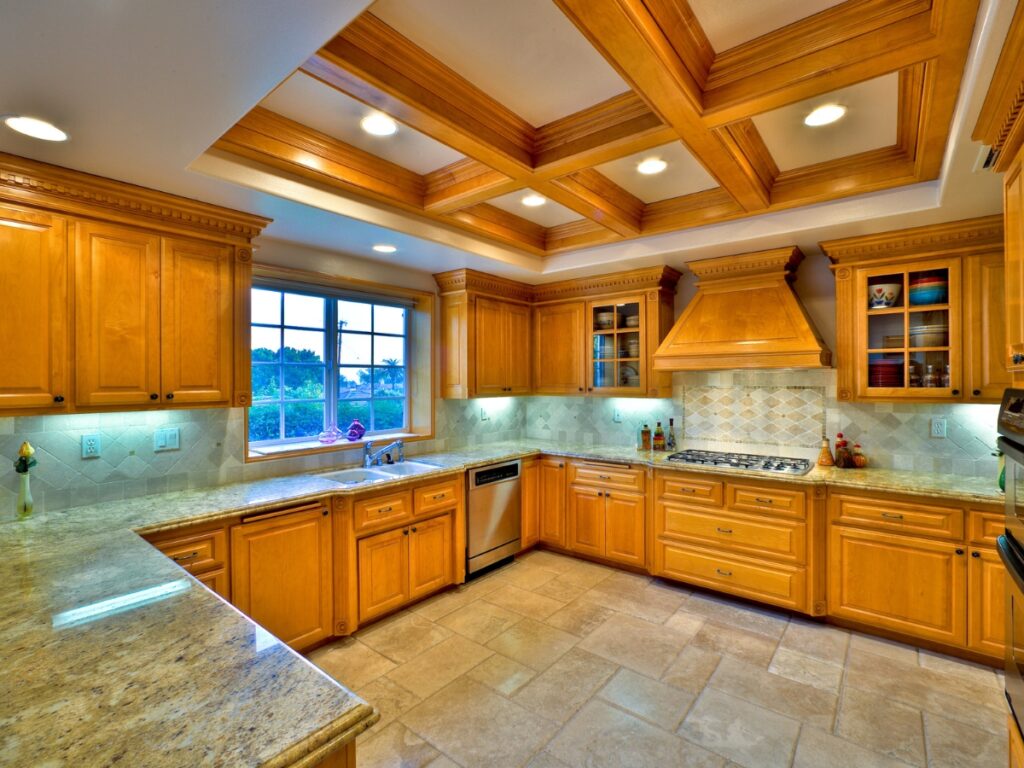Content Summary
- Learn some cabinetry-related terminology.
- This type of joinery could assemble the pieces of a cabinet’s face frame.
- Face-framed cabinets and drawers are larger than their frameless counterparts.
- The inset door is recessed inside the cabinet frame, hence its name.
- You can enhance your kitchen’s aesthetic appeal and functionality by selecting custom cabinets.
What Makes Custom Cabinets So Valuable?
Custom kitchen cabinets are highly valued, and with good reason. It is astounding how much skill and care go into making custom cabinets. Most cabinet makers are perfectionists who spend years perfecting their craft.
Custom cabinets are expensive. As demand increases, so does the price. How cabinets are constructed determines their durability and appearance after years of use.
With custom cabinets, homeowners and remodelers can create one-of-a-kind pieces that match their desired aesthetic. From selecting the ideal wood grain pattern and cabinet style to crafting and completing the product, the entire procedure can often appear mysterious.
This article will give you a general idea of how long custom cabinets typically take from start to finish. Understanding each step in greater depth allows you to plan projects more effectively for a truly rewarding outcome.
Learn some cabinetry-related terminology. Some essential terms to comprehend are:
- Materials used
- Constructing methods
- Build techniques
Ultimately, the quality and appearance of your cabinets will depend on these three factors.
What Materials Are Your Cabinets Made From?
When specifying cabinets, many materials are available. The distinctions between MDF, solid wood, particleboard, and plywood should be understood. Let’s start by gaining a basic understanding of these materials.
Solid Wood
As the name implies, it is made entirely of uniform, solid wood. Only variations are boards or panels made of several solid wood pieces joined.
Plywood
Plywood is the most common engineered wood product. It’s made of thin wood “plies” glued together. The plies are usually oriented at different angles to increase the board or panel’s rigidity and stability.
Medium-Density Fiberboard (MDF)
MDF is made of wood fibers. The fibers are combined with an adhesive and formed into panes and boards under pressure. Particle board has a rougher texture than MDF, which is heavier and denser.
Particle Board
Wood chips and other small pieces are mixed with an adhesive to make particle board, an engineered wood product.
Melamine
This plastic sheet material, which resembles laminate, is used to cover the exterior of cabinets. Typically, MDF fiberboard, plywood, or particleboard is used as the substrate beneath melamine.
Cabinet Construction Methods: How Are They Done?
Cabinet frames, drawers, and box construction can be done in various ways. There is no right or wrong way to construct cabinets.
The chosen method will determine the final product’s quality and the time and labor required.
Here are the most sought-after modern techniques:
Tenon and Mortise
This type of joinery involves inserting a square “post” protruding from the end of one piece of wood into a square cutout or hole in the piece it is paired with. This type of joinery could assemble the pieces of a cabinet’s face frame.
Doweled Joint
This joinery method employs round timber dowels (pegs) that are halfway pressed and/or glued into drilled holes in a single wooden piece. After drilling holes in the matching wood, the dowel’s protruding end is inserted. This technique is an alternative method for joining cabinet boxes or drawers’ sides.
Dado
A dado is a groove cut into a panel or board that allows the edge of another panel or board to fit inside. This method captures the drawer bottom more firmly than simply nailing or gluing the drawer bottom edges towards the side panels.
The Inset Difference: Inset
Despite being widely used in Europe for many years, frameless cabinets were only recently introduced to the United States. Typically, doors have complete overlays that enclose the entire cavity and box. Cabinets without a frame provide unrestricted access and maximize available space.
Face-framed cabinets and drawers are larger than their frameless counterparts. The inset door is recessed inside the cabinet frame, hence its name. The door is constructed and designed with extraordinarily precise dimensions to ensure that it fits within the frame and functions as intended.
The Most Common Overlay
Typically, the basic overlay cabinet is the most widely used. Face frames on standard cabinet doors range in thickness from ½ inch to 1 inch, and the distance between drawers and doors varies.
How Long Does It Take to Make Semi-Custom Cabinets?
Construction of custom cabinets can take between three to four months from the time you accept the order until they are delivered to your home. Ready-made cabinets can always be delivered to the job site within a few days, whereas semi-custom cabinets require four to eight weeks to finish.
The Benefits of Custom Cabinets
Custom cabinets are more durable than stock options, so they can be made to fit any kitchen size. These cabinets can help you better organize your kitchen because of their customized drawers, pull-out shelves, and other tailored features.
You can enhance your kitchen’s aesthetic appeal and functionality by selecting custom cabinets.
Consult Greenville Cabinets regarding your needs and the most recent cabinetry trends, and we will produce custom cabinets that precisely meet your specifications. We will work with you to create the perfect cabinets. Call us at (616) 225-2424 to schedule an appointment. We anticipate working with you.


